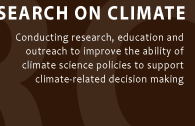

PART 5: |
|
In addition to facilitating progress toward desired outcomes, reconciling supply and demand can greatly expand the community of individuals who recognize, trust, and become champions for both a program and the science it funds. Reconciling supply and demand can also lead in unexpected and exciting new directions for both science and social action. Some of NOAA’s RISA programs, for example, have established a basis for extensive and lasting interdisciplinary and service-oriented research programs that have gained the attention and support of state and local governments. In this short publication we have tried to identify some issues, opportunities, and frameworks that may be shared among science managers and other individuals who wish to generate usable science, even if they work in vastly different organizations. But there are likely many more. Coming together to share experiences and best practices across a wide range of problem areas, from health and environment to homeland security and social justice, may prove mutually beneficial. Issues such as appropriate metrics, what works and what doesn’t, how to involve stakeholders, and the role of champions may translate across cultures and contexts. As we carry this research forward we will continue to engage with science managers, and attempt to build a critical mass of practitioners taking a creative approach to reconciling supply and demand. An effort to look for common ties also has benefits for creating a sense of community, fostering programmatic innovation, saving time, and helping to make science more useful. The Science Policy Assessment and Research on Climate (SPARC) program is a joint project of the University of Colorado’s Center for Science and Technology Policy Research and the Arizona State University’s Consortium for Science, Policy, & Outcomes that was funded under NSF’s Decision Making Under Uncertainty (DMUU) program. More information on: |
 |
ACKNOWLEDGEMENTS This publication draws upon research conducted both within and outside of the SPARC project. The text was written by a team of SPARC researchers, including: Marilyn Averill, Lisa Dilling, J. Britt Holbrook, Nat Logar, Genevieve Maricle, Elizabeth McNie, Ryan Meyer, and Mark Neff. Layout and Design by Ami Nacu-Schmidt and Rachel Lowenstein. We thank individuals who consulted with us on the development of this handbook including Nancy Beller-Simms, Rad Byerly, Claudia Nierenberg, Peter Backlund, and Kevin Vranes. Support was provided by the National Science Foundation (Grant Number: SES 0345604) and the V. Kann Rasmussen Foundation. All responsibility for content rests with the authors. |
|